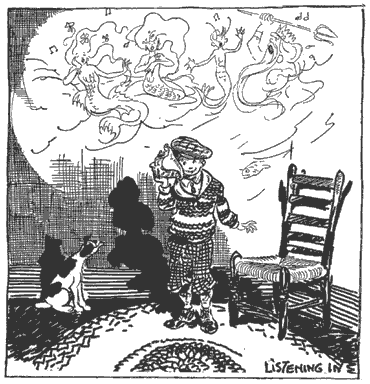Ohio-cartoonist Clare Victor Dwiggins, who used to sign "Dwig", initially focused on a career in architecture. He started his career as a cartoonist in 1897, when he published his first cartoons in the Saint Louis Dispatch and the New York World (owned by Joseph Pulitzer). He produced many gags and panels, that regularly referred to rural boyhood, such as 'J. Filliken Wilberfloss', 'Leap Year Lizzie', 'Them Was the Happy Days', 'Uncle Jim and Tad and Tim', 'Mrs Bump's Boarding House', 'Ophelia and Her Slate' and 'Bill's Diary'. His first actual comic strip was 'Gallant Cholly', that ran in the Philadelphia Inquirer for a couple of months in 1901.
'Uncle Jim and Tim '(1918).
One of his most memorable creations was 'School Days', a Sunday strip that appeared in the early 1910s. As the title suggests, it depicted the life of school children, evoking a Victorian atmosphere. Evolving from a one-panel strip into a continuing story, the strip ran until 1932.
'School Days' (1927).
By 1918, Dwig created the Sunday comic 'Tom Sawyer and Huck Finn', loosely based on the classic book by Mark Twain. For the Ledger Syndicate, Dwig created 'Nipper', which appeared from 1931 to 1937. Starting in 1940, he returned to 'Huckleberry Finn', this time published in Doc Savage Comics and Supersnipe Comics. In the latter comic book, he also drew 'Bobby Crusoe' in 1945. That same year, he left comics and focused on illustration. He has published five books with August Derleth until his death in 1958.






